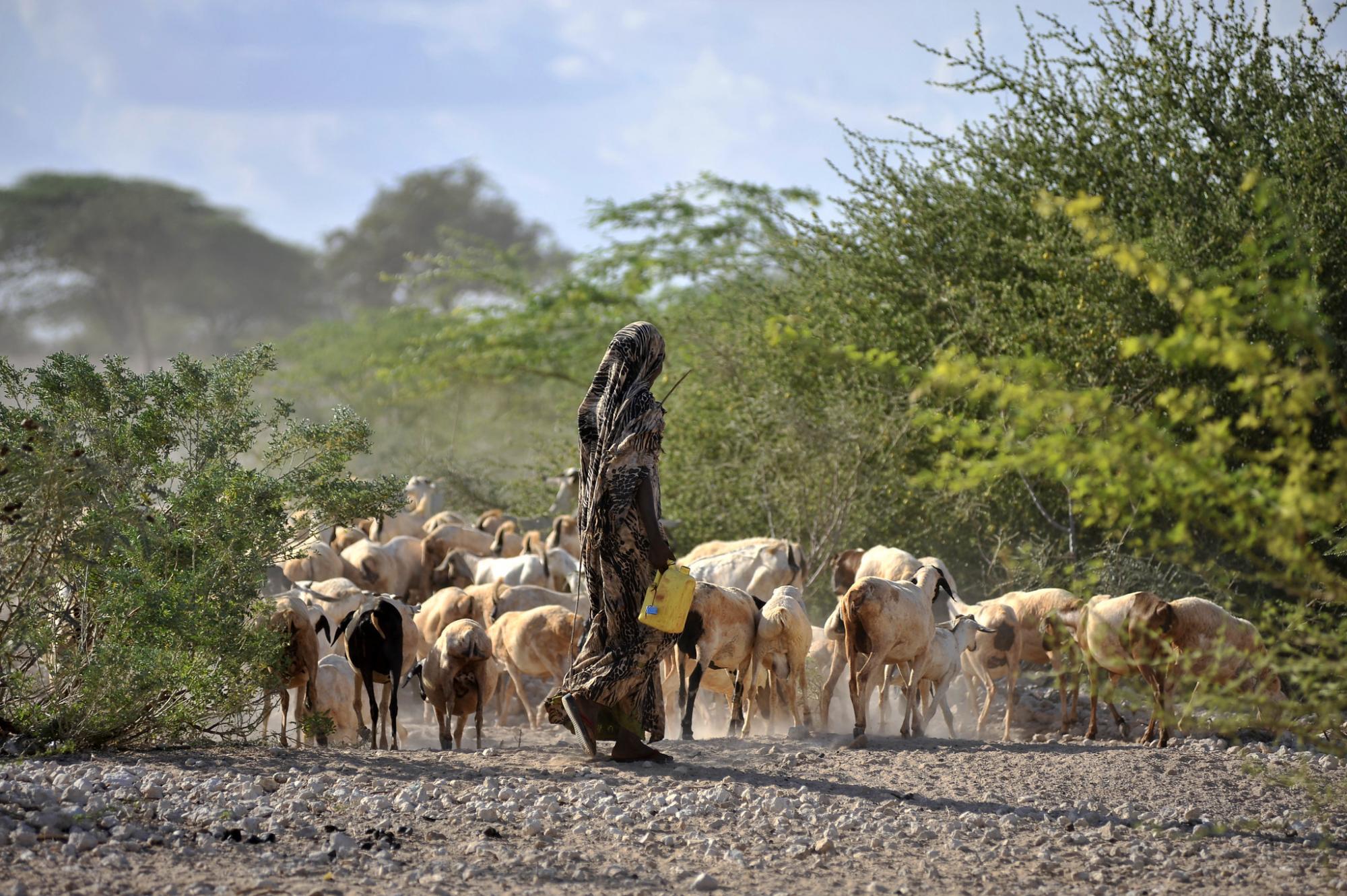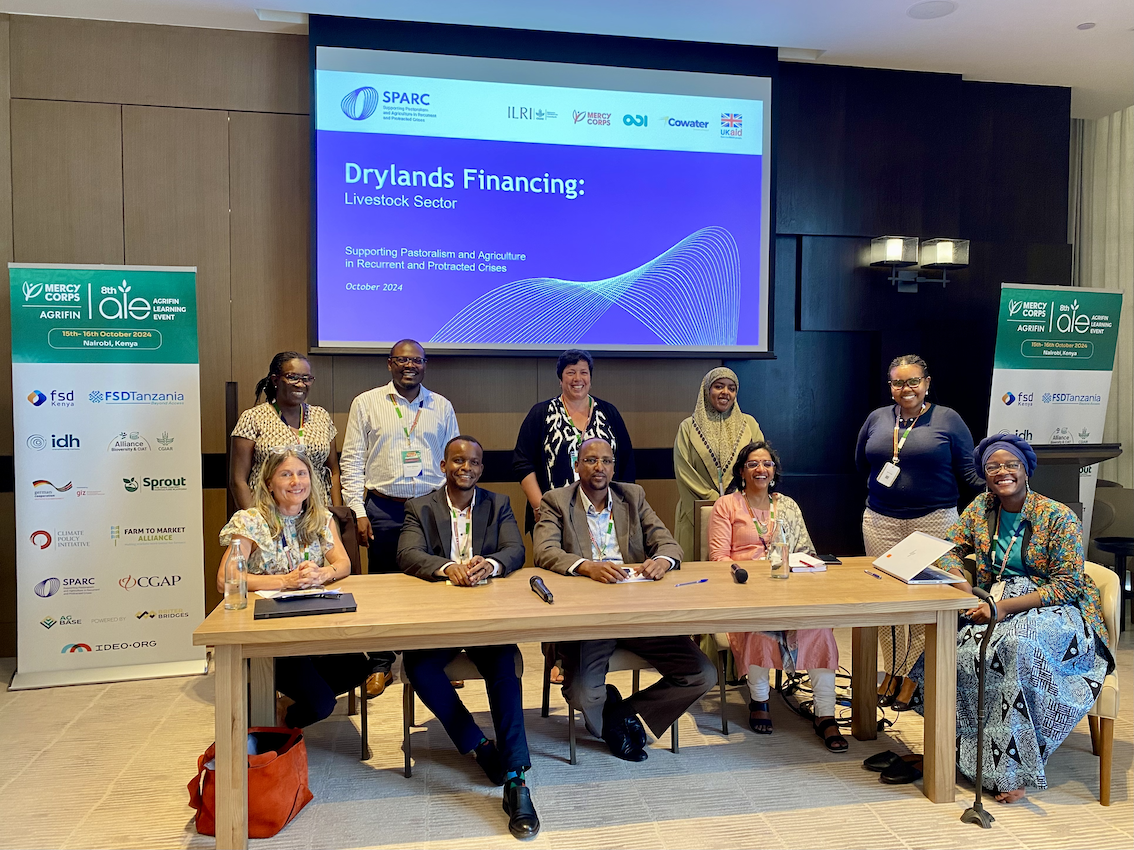
SPARC x ALE Dryland Financing Masterclass – 15 October 2024
Core message
In Kenya, 80% of land is characterized as arid and semi-arid lands (ASAL), where pastoralism is the main source of livelihood for the millions of people living in these regions. Pastoralism contributes 13% to the GDP, keeping over 75% of cattle herds that supply the bulk of meat consumed in the country. Despite livestock's substantial contribution to the GDP, livelihoods, and food systems in Africa, the sector remains disproportionately underfinanced across the continent, particularly in the drylands.
A study producing the anchor report Unlocking Investment for the Kenyan Livestock Sector revealed that since 2015, $500 million has been invested in agriculture in Kenya, with only 10% directed to livestock and even less to the drylands. Kristin Girvetz, director of AgThrive, shared how this translates at global forums like last month's Africa Food Systems Forum in Kigali, where out of 37 business pitches, only 10 were livestock-related and none focused on the drylands.
For the past eight years, Mercy Corps AgriFin has convened key stakeholders in the agricultural sector, focusing on leveraging digital technology to drive growth and improve the lives of smallholder farmers through its Annual Learning Event (ALE). This year under the theme Enabling Rural Economy: Creating Lasting Impact for the Digital Ecosystem in Africa, AgriFin partnered with the Supporting Pastoralism and Agriculture in Recurrent and Protracted Crises (SPARC) consortium to host the Drylands Financing: Livestock Sector Masterclass on 15 October 2024 in Nairobi, Kenya. This Masterclass brought together experts to share insights focused on drylands and pastoralism, bridging the gap between agricultural investments and the livestock sector, and expanding on AgriFin's growing inclusion of livestock within formerly crop-focused discussions.

Key Takeaways
During the Masterclass, experts debunked common myths and proposed potential solutions to attract investment into the livestock sector in dryland areas.
Debunking Drylands Myths
A major reason for the low investment is the lack of understanding of both dryland context and livestock potential. Experts used on-the-ground research and stories to debunk three significant myths:
1. The livestock sector in the drylands is worth investing in, and financing is already taking place.
Tito Tibi, senior program manager of the Livestock Program at Gatsby Africa, highlighted that Kenya consumes around 2 million heads of cattle annually. Despite having Africa’s largest herd, the country is still a net importer of beef and is not on track to meet its market and nutritional demands. Although major financial institutions have not yet recognized the potential of Kenya’s beef sector, financing is still happening in dryland areas—it just looks different.
For example, in Isiolo County, a broker buys cattle from pastoralists and sells them in urban end markets like Mombasa or Nairobi. During financial stress, this broker extends credit to pastoralists based on the size of their herds, knowing they will be able to repay the debt after selling their cattle.
As Tibi put it, 'Financing is happening, but not by our white-collar friends.'
2. Informal markets are well-organized and serve the community.
There is a widespread belief that informal markets are chaotic and disorganized. However, Rupsha Banerjee, senior scientist in Institutions and Innovation at the International Livestock Research Institute (ILRI), explained that rural drylands markets operate as structured ecosystems. While they may not follow mainstream practices, money is exchanged in an organized manner. Furthermore, these informal markets are effective in serving local communities, and communities have no desire for them to be formalized.
3. Pastoralists will pay for improved livestock services.
Contrary to the assumption that pastoralists wait for government assistance, Wario Sake, livestock director at Northern Rangelands Trust, emphasized that pastoralists will pay for suitable services. Banerjee supported this with evidence from a recent study, which showed that when animal health services were bundled with insurance, for example, pastoralists recognized the benefits and willingly paid for the service.
Potential Solutions to Increase Investments
After establishing a shared understanding of the challenges and needs of dryland communities, experts proposed solutions that could help service providers and financial institutions bridge investments with livestock opportunities, while integrating investments into cultural norms and pastoralist systems.
1. Collaborative and innovative methods for generating data and solutions.
Tibi pointed out that in informal systems, much of the money is exchanged in cash, making it difficult to track. A digital platform or greater use of mobile money could help attract investment by providing transparency and showing the true scale of money flowing in the sector. In addition to digitalization, innovative solutions ready for investment include alternative feed options, bundled services, various types of financing, and improved rangeland governance and land-use planning.
Given the complexity and evolving nature of rangelands, another suggestion for investors was supporting frequently updated risk profiles. This would help them better understand the risks and make more informed investment decisions.
2. Supporting a new narrative that accurately reflects drylands systems.
Girvetz emphasized that investors and banks still struggle to grasp the market opportunities within the livestock sector. Livestock businesses need support in telling their stories from an impact perspective, weaving in the climate and environmental implications and solutions into their pitches.
Banerjee acknowledged that changing the narrative around drylands will take time due to the historical marginalization and fragile contexts of these communities. However, she stressed that this shift is essential to encourage urban investors to increase money flow to the ASAL regions:
'We need to change the narrative, so the drylands become the land of opportunity, not conflict.'
3. Government backing for policy harmonization and targeted subsidies.
Government support is crucial for creating an enabling environment for private investment. Sake highlighted that the livestock sector in drylands is governed by a patchwork of fragmented, outdated, and often contradictory policies. Governments need to harmonize these policies and introduce new ones based on data from research institutions and inclusive, participatory consultations with stakeholders.
Collaboration is key, as public expenditure should coordinate government and private service providers, building capacity with proven bundled technologies and services. Additionally, targeted subsidies should be implemented to ensure that all groups, including different wealth categories and genders, benefit from these investments.
Looking Forward
Financial institutions, governments, research organizations, development partners, and rural livestock businesses all have a role in increasing investment in the livestock sector in drylands.
The drylands should not be an area of competition for investors, but an area of collaboration for everyone, especially given the vastness.
—Banerjee, ILRI
This Masterclass highlighted pathways and appropriate solutions that can attract more financing within pastoralist systems. Continued conversations and collaboration are key to unlocking the immense opportunity and potential of livestock in drylands to benefit both people and the environment.